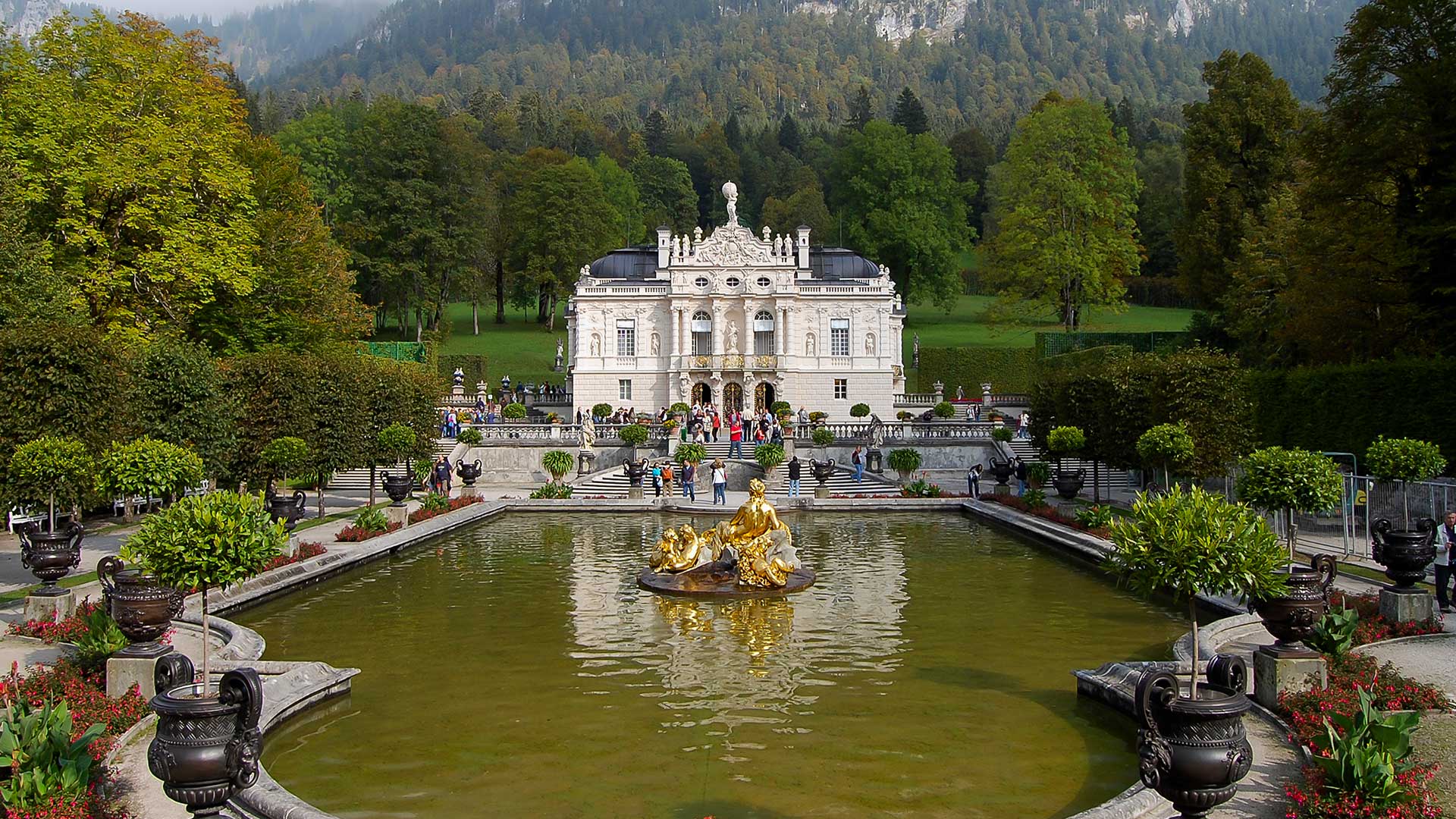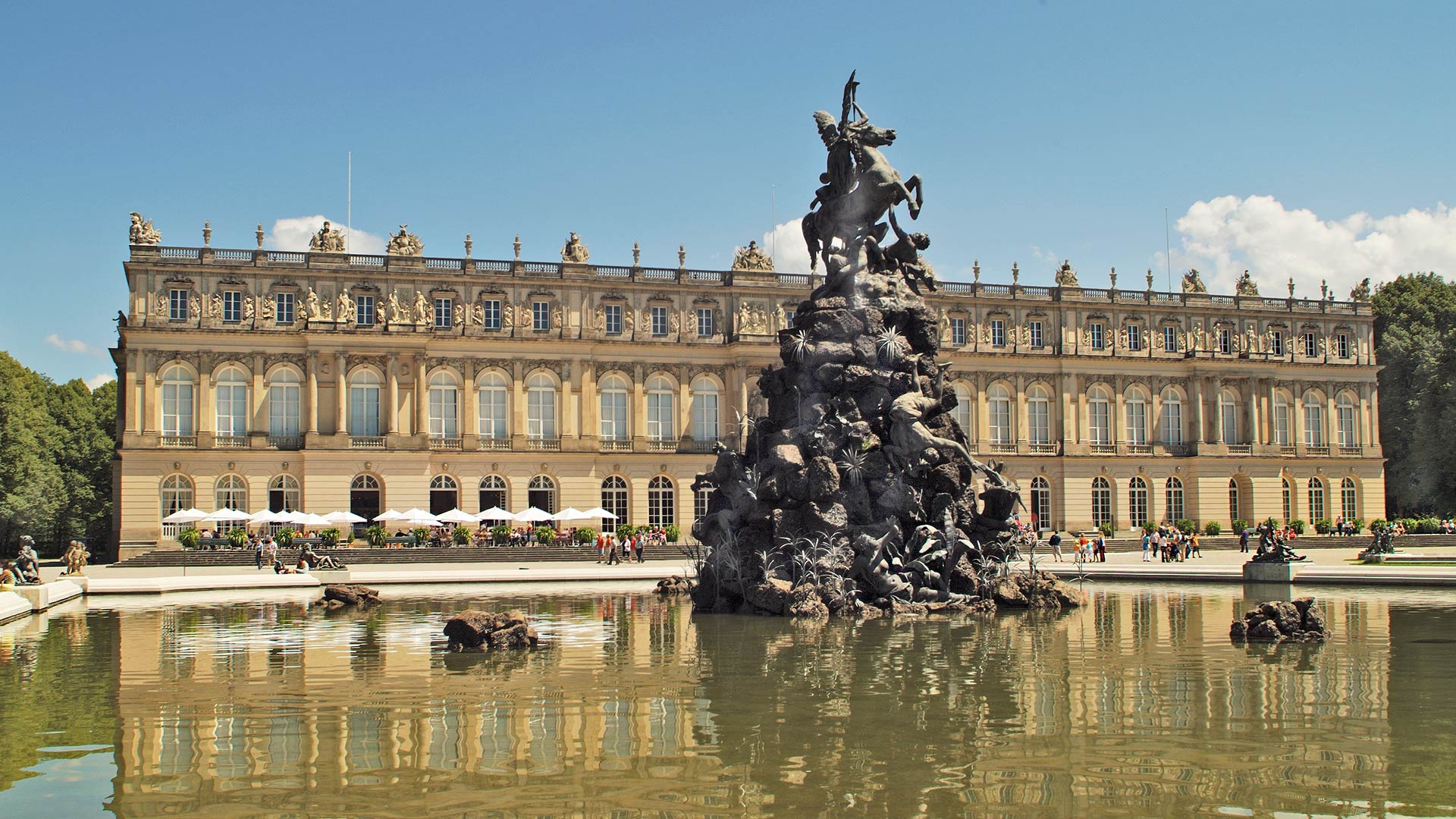Exploring the Bavarian castles

©bluejayphoto/iStock
A loner and a dreamer, Ludwig II of Bavaria was barely interested in the affairs of his kingdom. Instead, he devoted his short life to an endless dream: to build ever larger, ever more lavish castles. Neuschwanstein, Linderhof and Herrenchiemsee, the three palaces he had built during his lifetime, testify to this day to the extravagant grandeur which had taken hold of the "fairytale king".
Neuschwanstein Castle
If there was ever a castle taken straight from a fairy tale, it is Neuschwanstein, with its keep and its skilful arrangement of turrets. Walt Disney himself drew inspiration from its sleek silhouette when drawing the Sleeping Beauty castle as well as the famous logo for his studios. Inspired by medieval fortresses, the Neuschwanstein Castle is the centerpiece of the collection of palaces created from the King of Bavaria’s fertile imagination. Perched in lush greenery, it faces the neo-Gothic-style castle of Hohenschwangau, where Ludwig II spent his youth.
Construction of Neuschwanstein began in 1869, five years before the young Ludwig II ascended the throne – at the age of 22. Melancholic and introverted, the young man had no appetite for politics. He devoted his reign to building plans for castles, abandoning kingdom affairs and squandering his fortune to indulge in his expensive whim.
Obsessed with the medieval period, Ludwig II of Bavaria worshiped Richard Wagner, for whom he acted as a main patron. Neuschwanstein is full of references to the German composer’s operas such as the artificial cave on the third floor, which evokes the legend of Lohengrin and a large room dedicated to Tannhäuser. Ludwig II stayed there for just one hundred days. The castle wasn’t finished until 1892, years after his death.

©bluejayphoto/iStock
Linderhof Castle
The romantic king was also a fervent admirer of Louis XIV. Inspired by the Petit Trianon in the gardens of Versailles, he designed plans for his plush little Baroque palace in Linderhof, built between 1874 and 1878. This royal mansion, surrounded by a large park, was the only building completed during his lifetime. The young king liked to take refuge there, spending most of his time alone, living a nocturnal existence to avoid the servants. He even had his dining room fitted with a mechanical system that allowed his table to be hoisted from the ground floor kitchen and up to the chateau.
A must-see curiosity in the gardens: the Venus Grotto, an artificial cave (unfortunately closed for renovation in 2017) lined with stalactites and equipped with a colourful lighting system that was revolutionary for the period. An extravagance that was to serve as a backdrop for Wagner’s operas …

©Adrian Wojcik/iStock
Herrenchiemsee Castle
Ludwig II’s last major project was the construction of Herrenchiemsee Castle, located on Herreninsel, an island in Chiemsee Lake. The foundation stone of this sumptuous palace, a replica of the Palace of Versailles, was laid in 1878. The interior is a deluge of gilding and mirrors. The Bavarian King went so far as to develop a parade bedchamber – like the Sun King, who would invite trusted courtiers to assist him when he rose in the mornings and retired in the evenings – and to reproduce the famous gallery of mirrors that would be lit by 2,000 candles at dusk. The king was only able to stay in his unfinished palace for a few days.

©fotofritz16/iStock
After these architectural extravagances led him to ruin, he was declared insane, deposed and sent to Berg Castle where he was interned. He died there the day after his arrival, his body and that of his doctor were found mysteriously drowned in the waters of the nearby Lake Starnberg.
Ludwig II had, however, other ambitious projects for castles. In particular, he had planned to build a castle even more majestic than Neuschwanstein, on the ruins of Falkenstein Castle, a medieval fort perched on a mountain near the village of Pfronten, close to the Tyrolean border.
Feel like getting away from it all?
See our suggestions for novel trips and must-see places to visit near your home or holiday destination.